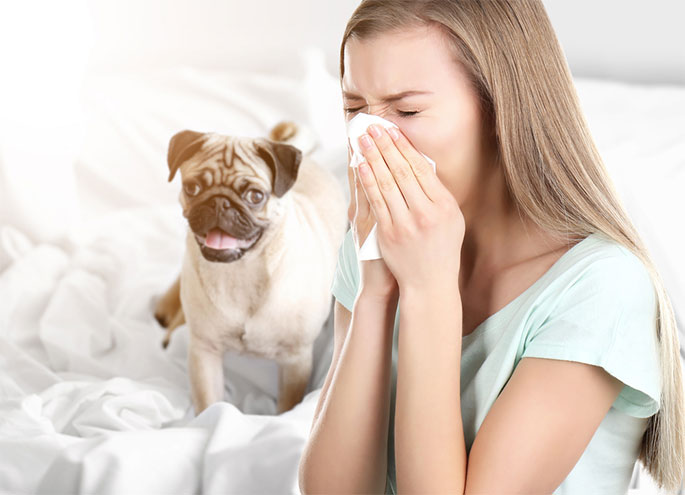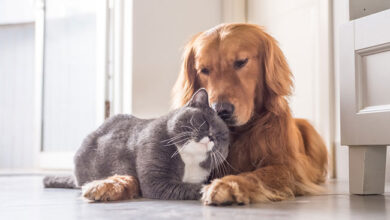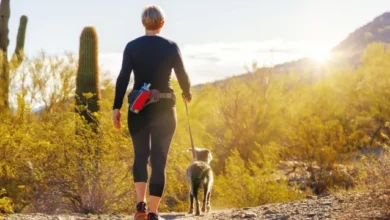
Just like humans, dogs can be allergic to many different substances. Many of these allergies also affect people, such as allergies to plant particles and certain foods.
When your dog comes into contact with a substance they’re allergic to, it causes their immune system to attack the substance. Even though the substance isn’t actually harmful, the immune system doesn’t seem to know that for one reason or another.
The immune system then releases histamine, as well as other substances, which trigger an immune response. This creates the symptoms we often consider symptoms of allergies in dogs. As you can see, it isn’t the substance itself that is causing the problems, but your dog’s immune system.
Symptoms for Allergies in Dogs
The symptoms of allergies differ from canine to canine and may depend on the particular substance your dog is allergic to. Some symptoms can be quite confusing. For example, allergies tend to appear as skin problems, such as itchiness, swelling, and redness. This is true for food allergies as well, even though the food might never come into contact with the dog’s skin.
Other symptoms include:
- Skin irritation, especially around the feet
- Hives
- Swelling around the face
- Inflammed skin
- Diarrhea
- Vomiting
- Sneezing
- Itchy Ears
- Uncontrollable licking
Luckily, these symptoms are usually not deathly serious. Allergies are usually not deadly in any sense. However, they can obviously be very annoying and troublesome for your pooch.
Furthermore, some allergy symptoms can lead to secondary infections. This is a problem that isn’t tied directly to the allergies but comes about because of one of the symptoms. This is one of the major problems involving allergies. The symptoms themselves are typically not serious, but secondary infections can be.
For example, let’s say your dog has minor skin irritation on their feet due to an allergy. They begin to itch and lick the area. As they itch, they irritate the skin more which just makes it itchier. This cycle continues until they’ve created sores. These sores can’t heal because the dog is always scratching them, allowing a secondary infection to set up.
Eventually, this secondary infection can lead to sepsis if it becomes chronic. Luckily, this only happens very rarely because the owner often takes their dog to a vet before they reach this point. Alternatively, the source of the allergen might be removed, which gets rid of the itchiness.
Types of Allergies
Before you can cure an allergy, you need to know what kind of allergy it is. There are three main types of allergies in dogs:
- Food Allergies
- Flea Allergies
- Environmental Allergies
Food allergies are obviously caused by some sort of food your dog is eating. Usually, this is a common protein source, like chicken or beef. Grain allergies also occur, but they are much rarer.
Flea allergies are caused by flea bites. Almost every dog has some sort of flea allergy, though, for most dogs, it is very minor. Other dogs may break out in a terrible rash and become very itchy after just one flea bite.
Environmental allergies range from pollen to cleaning products. Anything your dog is exposed to in their environment falls into this category.
All of these allergies have the exact same symptoms, so it can be difficult to determine which is affecting your canine.
Your Dog’s Food Matters
When your dog has a food allergy, you will nearly always have to switch their food. Before you do that, however, you’ll need to figure out what they’re allergic to. Often, you can simply switch to a formula that doesn’t include the protein they usually eat.
If your dog is eating a chicken formula currently, often just switching to a beef formula will be enough.
Work with your dog’s vet to figure out which would be the best hypoallergenic dog food for your canine. You may have to try multiple brands before you find something your dog doesn’t react to, so make sure to buy smaller bags.
Some dogs are allergic to grain, though this is much less common than protein allergies. Speak with your vet about whether or not you need to switch to grain-free dog food.
Avoidance is Best
As with the food allergy, the best way to handle environmental allergies and flea allergies is to avoid the problem.
If your dog has fleas, get rid of the fleas. If your dog is allergic to your cleaning products, you will need to change your cleaning products.
This is often easier said than done, especially if you aren’t sure what your dog is allergic to. It is notoriously difficult to find the cause of dog allergies because typical tests do not work.
When You Can’t Avoid, Manage
It isn’t always possible to avoid your dog’s source of allergies. You can’t stop taking your dog outside to avoid the pollen, for example. In these cases, you’ll have to learn to manage your dog’s allergies.
There are some anti-itch medications that your vet may prescribe to your dog. These can help prevent some of the symptoms your dog is suffering from and decrease the likelihood of certain infections.
If your dog seems particularly prone to secondary infections, some sort of regular antibiotics might be necessary.
Medicated shampoos are often recommended for canines with severe skin problems. Those who have fleas might be given a medicated shampoo at the same time as they are given a flea bath. This is often done at the vet’s office, but you can also use medicated shampoo at home as well.
Usually, you do not need a prescription. However, if your vet wants you to use a particular kind of shampoo, she may provide you with a prescription.
In very severe cases, hyposensitization shots might be helpful. These shots contain very small amounts of allergens, which can slowly help your dog’s immune system learn that the allergens aren’t bad. They are similar to the “allergy shots” used in humans and are typically given daily.



